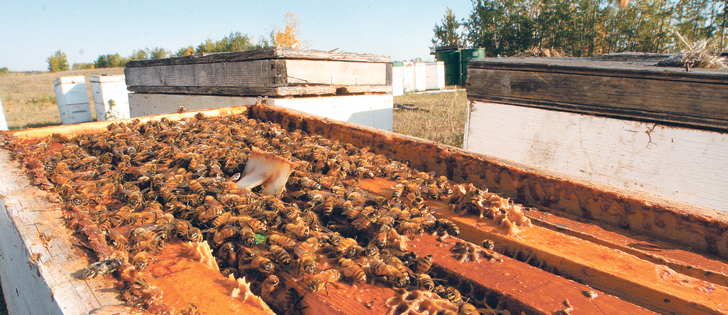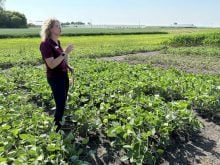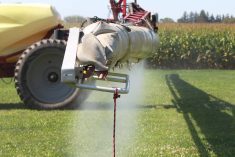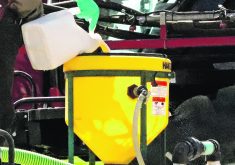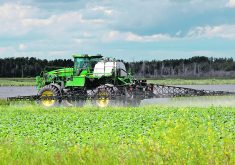Public pressure forced the U.S. Food and Drug Administration to test for chemical residues, but testing is not done in Canada
For years, environmentalists have said insecticides must be banned to protect bees.
Now, some of those same environmental groups are saying that glyphosate must be banned to protect consumers from tainted honey.
Last fall, the U.S. Organic Consumers Association and Beyond Pesticides filed a lawsuit against Sue Bee Honey of Sioux City, Iowa, because its honey tested positive for traces of glyphosate. The lawsuit said Sue Bee’s labelling, advertising its honey as “Pure” and “Natural,” is false and misleading.
Paul Gregory, a beekeeper from Fisher Branch, Man., said glyphosate and the lawsuit were hot topics in Texas this January at the North American Beekeeping conference.
Read Also

Farming Smarter receives financial boost from Alberta government for potato research
Farming Smarter near Lethbridge got a boost to its research equipment, thanks to the Alberta government’s increase in funding for research associations.
“Something like 80 percent of American honey tested had levels of glyphosate.”
Glyphosate, the active ingredient in Roundup, may have contaminated the honey because bees forage on corn and soybeans. Those crops are sprayed with the herbicide during the growing season.
A report by U.S. Right to Know, a proponent of labelling genetically modified food, said U.S. Food and Drug Administration scientists tested American honey in the last year and found glyphosate levels of 20 to 100 parts per billion and higher.
Samples of Sue Bee honey had glyphosate residues of 41 p.p.b. The European Union has a tolerance level of 50 p.p.b. in honey.
The levels are worrisome because glyphosate has been highly controversial since March of 2015, when the International Agency for Research on Cancer (IARC), a division of the World Health Organization, said the herbicide is probably carcinogenic to humans.
Many scientists, including prominent toxicologists, condemned IARC, saying the science behind its decision was flawed, but the classification of “probably carcinogenic” changed the conversation about glyphosate.
Public pressure in the U.S. forced the FDA to test food for glyphosate residues. The agency had not previously tested for the herbicide.
Gregory raised the glyphosate issue at the Manitoba Beekeepers’ Association convention, held late February in Winnipeg.
If consumers think honey is contaminated with pesticides it could damage the entire industry be-cause honey has a reputation as a pure food, he said.
Canada’s honey industry is aware of the lawsuit and the concerns about glyphosate residue in the U.S., said Rod Scarlett, Canadian Honey Council executive director.
However, prairie bees live in an environment with more wild land and less cropland than American honeybees.
“For the most part, I don’t expect that we would have as much of an issue up here,” he said. “Our habitat is quite a bit different. Even in intensive farming areas there are still areas that are natural.”
The amount of glyphosate in Canadian honey might be ex-tremely low but it’s impossible to know unless testing is done.
“It would be nice to keep ahead of that (public backlash) and do a national survey and find out how much glyphosate is in honey,” Gregory said.
The Canadian Food Inspection Agency has been testing foods, grains and oilseeds for glyphosate residues since 2015. The agency said, in 2016, that it would publish results of the testing in April of 2017.
It’s unclear if the CFIA has been testing honey for glyphosate but the controversy over residues may persist, regardless of the evidence.
“If an environmental group decides to latch on (to this) it could create problems,” Scarlett said.
“Whether or not honey is the issue, or it becomes a different commodity, that’s up in the air.”




